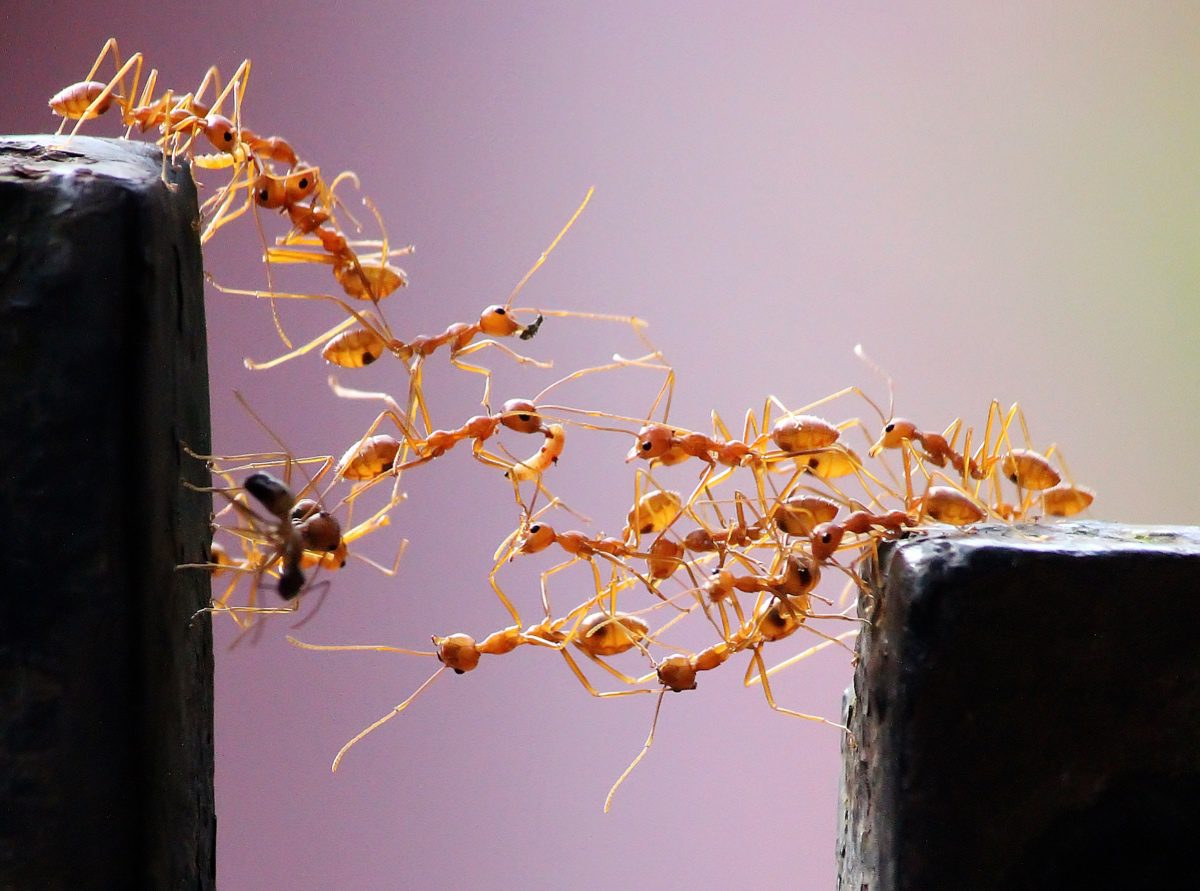The animal kingdom is filled with extraordinary architects, each showcasing their remarkable skills and techniques in constructing their homes. The bowerbird creates a carefully constructed avenue adorned with dazzling displays to attract a mate, while the weaver ant weaves leaves together using silk to create nests that serve as protective shelters for large colonies. Termites build intricate mounds that maintain stable internal temperatures, while the belted kingfisher burrows into banks to construct nests and the beaver creates elaborate dams across rivers. Paper wasps create intricate nests made from chewed wood and saliva, while sociable weavers build enormous communal nests for multiple families. Compass termites construct towering mounds aligned in specific directions, while the red ovenbird builds dome-shaped clay nests. The edible-nest swiftlet constructs nests with solidified saliva in dark caves. These remarkable creatures inspire awe and admiration for their ability to shape and create their habitats in harmony with the natural world.
1. The Bowerbird: Master of Artistic Design
The bowerbird, found in Australia and New Guinea, is renowned for its incredible architectural skills. The male builds a unique structure called a bower, a carefully constructed avenue adorned with brilliant displays to attract a mate. With meticulous attention to detail, the bowerbird utilizes twigs, leaves, stones, and feathers to create an intricate masterpiece that showcases its artistic prowess.
2. The Weaver Ant: Nature’s Living Tapestry
The weaver ant, native to South Asia and Australia, constructs nests by weaving leaves together using silk produced by its larvae. These nests serve as protective shelters and serve as a symbol of unity, as they are home to large colonies of up to half a million ants. The impressive cooperation and coordination displayed by these tiny architects are truly remarkable.
3. The Termite: Engineers of the Underworld
Termites may be small, but they are certainly among nature’s most skilled architects. These social insects build intricate mounds that maintain stable internal temperatures despite external climate fluctuations. Constructed using a mix of soil, saliva, and excrement, termite mounds often reach colossal heights and provide protected living spaces for entire termite colonies.
4. The Belted Kingfisher: Engineering Marvels in the Wild
The belted kingfisher is a remarkable avian architect, known for its exceptional burrow-digging skills. These birds burrow into sandy or clay banks to construct their nests, often excavating tunnels several feet in length. The kingfisher’s ability to carve out a living space within these unstable banks is a testament to its determined nature and engineering expertise.
5. The Beaver: Nature’s Aquatic Engineer
Beavers are renowned for their ability to transform landscapes with their phenomenal dam-building skills. Using their powerful teeth and strong limbs, these extraordinary architects construct elaborate dams across rivers and streams. These structures create calm, deep pools of water that serve as protection against predators and provide an ideal habitat for various aquatic species.
6. The Paper Wasp: Craftsmen of Complex Nests
Paper wasps are known for their intricate, papery nests that resemble tiny umbrellas. These remarkable architects chew wood, mix it with saliva, and mold it into hexagonal cells, neatly arranging them in tiered levels. The construction process showcases remarkable precision and coordination among the wasps, resulting in stunningly complex and visually appealing nests.
7. The Sociable Weaver: Collaborative Avian Architects
The sociable weaver, found in Southern Africa, builds enormous communal nests that house multiple families. These massive structures, often occupying entire trees or utility poles, are created using twigs, grass, and other plant materials. With separate chambers for each family, these nests provide warmth and protection, demonstrating the cooperative nature of these exceptional avian architects.
8. The Compass Termite: Architects of Tall Tales
Compass termites, endemic to northern Australia, construct towering mound structures that can reach up to 13 feet in height. These mounds are aligned in specific directions, providing optimal temperature regulation and minimizing exposure to harsh sunlight. The precise alignment of the mound demonstrates the inherent architectural genius of these small yet remarkable creatures.
9. The Red Ovenbird: Masters of the Earth and Sky
The red ovenbird, found in Central and South America, constructs intricate, dome-shaped clay nests on tree branches. These meticulously built structures often include a long vertical entrance tunnel for added protection. With meticulous craftsmanship, the red ovenbird’s nest is a testament to the ingenuity and architectural prowess of these remarkable birds.
10. The Edible-Nest Swiftlet: Architecture in Treacherous Terrains
The edible-nest swiftlet, native to Southeast Asia, constructs nests made primarily from solidified saliva that hang from the ceilings of dark caves. These nests are considered a delicacy and are harvested for their economic value. The swiftlet’s unique ability to create a safe haven in challenging environments showcases the awe-inspiring architectural capabilities of the natural world.
In conclusion, the animal kingdom boasts a plethora of extraordinary architects, each species exhibiting remarkable skills and techniques in constructing their homes. From the artistic creations of bowerbirds to the towering mounds of compass termites, these creatures inspire awe and admiration for their innate ability to shape and create their habitats in harmony with the natural world.
